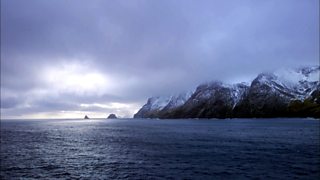Ships of the British whaling fleet in Antarctica
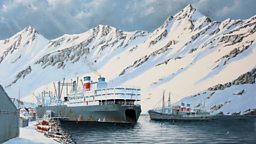
This first painting is the Southern Venturer at Leith Harbour Whaling Station in November 1961. I worked on the Southern Venturer this season — the last that Edinburgh-based & Co operated the boat. After that they sold it to the Japanese, who didn't use the ship itself — just the quota for whales that came with it. She was broken up in Spain in 1963. Floating factory ships such as this had all the same processing equipment as the land stations, but crammed into a small space.
I was inspired to go to Antartica by the stories of Scott, Amundsen and especially Shackleton. I signed up for my first whaling voyage in 1947 at the age of 15 and left my home in Edinburgh without telling my parents.
I spent several seasons working for Salvesen. After British whaling came to end in the early 1960s, I then worked in automotive engineering. Later in life I returned to the photographs I'd taken in Antarctica – and my memories – and started painting scenes of whaling ships.
I've donated paintings to several whaling museums in the USA, South Georgia, Norway and the Shetland Islands and .
Southern Actor delivering a fin whale to Leith Harbour
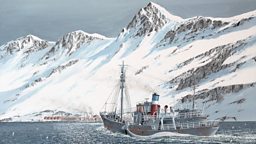
Southern Actor was one of the whale-catcher ships supplying Leith Harbour whaling station in the last season that the station was operated by Salvesens (1960-61). The Southern Actor ended up in Spain, where she was sunk by anti-whaling activists.
She was refloated and taken to the whaling museum in Sandefjord, Norway. She’s been restored to her original condition and is a unique record of the whaling industry.
Southern Broom
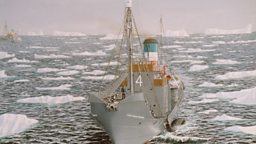
This is the Southern Broom delivering the very first whale to the factory ship in 1961. The boat had just been refurbished over the winter at Leith Harbour whaling station, which is why she looks so neat. She was converted from the boat ‘Stalwart’ – a WWII corvette. That’s why she has such an extended gun platform, which was good for heavy weather.
The Balaena
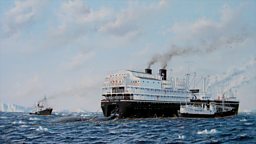
This is a boat that I never actually saw in Antarctica, so this is a painting from my imagination. I did see Balaena at the start of the whaling season in Norway, picking up crew and supplies. I always worked for Salvesens, and the Balaena was the other big British whaling ship down in Antarctica, operated by Hector Whaling.
When the rival boats were whaling in the ice they used code on the radio so that they didn’t divulge if there were whales in their area.
Southern Joker
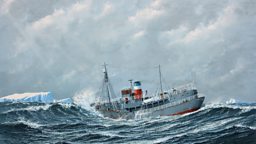
This was a day when it was particularly stormy in the Weddell Sea: the Southern Joker wanted to come in to the factory ship but there was no way she could. I tried to take a photo of this but the camera got soaked and the photo didn’t come out. So I had to paint this from memory.
This is one of the roughest days we had down in the whaling – you can see that the sea is swamping even the raised bow of the whalecatcher.
Southern Venturer at sea
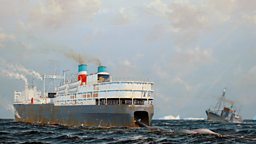
This is another painting I had to do from my imagination. I never left the Southern Venturer on one of the catcher boats so I didn’t get this view myself, but I’d seen other people’s photos. The red meat on the side of the factory ship is a rack of whale ribs. They would hoist them up and slice them off one at a time.
Then they would chop them into smaller sections to feed into the pressure cookers. A lot of oil could be extracted from the bones as well as from the blubber.
Continue your journey into the history of British whaling
-
![]()
Take a trip back in time with John Alexander's stunning photos of his time in the whaling industry.
-
![]()
Adam Nicolson heads to the former hub of the Antarctic whaling industry and sees how wildlife has taken over.

